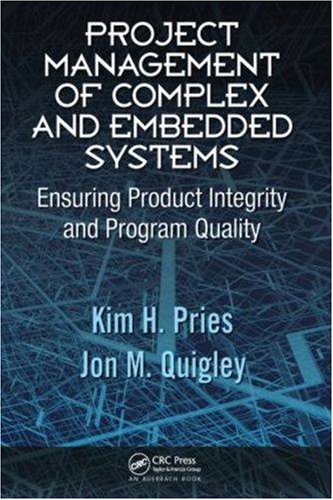

Most ebook files are in PDF format, so you can easily read them using various software such as Foxit Reader or directly on the Google Chrome browser.
Some ebook files are released by publishers in other formats such as .awz, .mobi, .epub, .fb2, etc. You may need to install specific software to read these formats on mobile/PC, such as Calibre.
Please read the tutorial at this link: https://ebookbell.com/faq
We offer FREE conversion to the popular formats you request; however, this may take some time. Therefore, right after payment, please email us, and we will try to provide the service as quickly as possible.
For some exceptional file formats or broken links (if any), please refrain from opening any disputes. Instead, email us first, and we will try to assist within a maximum of 6 hours.
EbookBell Team

4.3
48 reviewsWalks managers through the stages of a project’s life cycle so that they can anticipate and prepare for potential problems
This volume begins with a general discussion of project management, followed by an examination of the various tools used before a project is underway. The book then delves into the specific project stages: concept, product development, process development, validation of the product and process, and release to production. Finally, post-project stages are explored, including failure reporting, analysis, corrective actions, and product support.
The book draws heavily on information from Department of Defense sources as well as systems developed by the Automotive Industry Action Group (AIAG), General Motors, Chrysler, and Ford to standardize the approach to designing and developing new products. These automotive development and production ideas have universal value, particularly the concept of process and design controls.
The authors use these systems to explain project management techniques that can assist developers of any embedded system. The methods explored can be adapted toward mechanical development projects as well.
The text includes numerous “war stories”offering concrete solutions to problems that might occur in production. Tables and illustrative figures are provided to further clarify the material. Organized sequentially to follow the normal life cycle of a project, this book helps project managers identify challenges before they become problems and resolve those issues that cannot be avoided.